In deciding to spend an early December weekend exploring Estonia’s capital city of Tallinn, I clearly wasn’t choosing the most popular time of year for tourists. This Baltic country promised lots of cold and darkness, being tucked up so far east and north from my home in France. Yet over two days, I found a city that offered a surprising dose of winter beauty and a people wrestling with the question of this small country’s place in world.
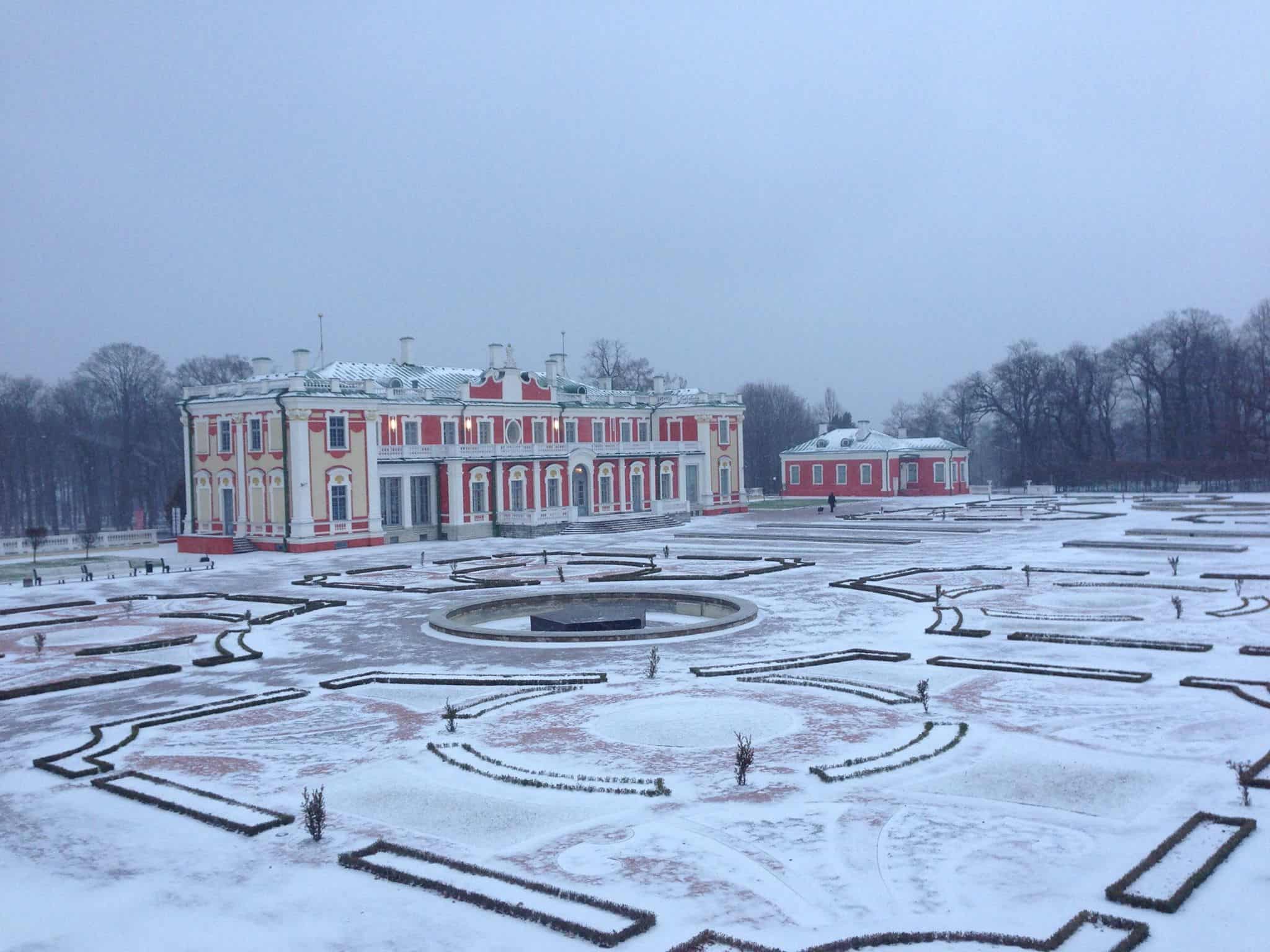
Kadriorg Art Museum
Moving from Silicon Valley to Europe four years ago, Estonia, which celebrated its 100th anniversary this past year, was exactly nowhere on my list of places to visit. The Baltics were a fuzzy concept at best, and being on the old continent, especially in France, presented an infinite list of fascinating destinations far closer to my new home. It was my work, however, that sparked my curiosity. For the past two decades I’ve been a technology journalist, mostly in Silicon Valley and now covering the European startup ecosystem. Three years ago, I was invited to moderate some panels at Slush, an annual tech conference in Helsinki in late November.
Visiting places like Helsinki serves as a constant reminder of just how terrible my sense of geography is. Certainly, I knew where Finland was on a map, and I studied the region carefully on Google Maps in preparation for my first trip. But it wasn’t until I landed in Helsinki that I understood just how truly far north and east the country was. Wandering the halls of Slush, I was surprised at the number of Russians in attendance, particularly from St. Petersburg. I imagine Russia as this vast country, so it was a surprise to learn that St. Petersburg was just a three-hour train ride away.
Likewise, the conference attracts a big Estonian delegation, in part because the country has one of the world’s most aggressive e-government programs, and in part because it’s just a two-hour ferry ride across the water. As I developed a growing curiosity Estonia, Slush friends insisted I must visit its capital city of Tallinn, particularly to learn more about Estonia’s efforts to become a digital nation.
A Weekend Getaway In Frozen Tallinn
Upon returning to Slush a second time, I decided to tack on a weekend in Tallinn. On the Friday morning after the conference, I dragged myself at an ungodly hour into a taxi to head to the ferry terminal. My iPhone told me it was -9 degrees Celsius, and I wasn’t going to quibble. Arriving at the terminal, I passed through ticketing and lumbered onto the ferry. To board such a mode of transport is to step into a world that seems to exist outside the known universe, a strange subculture with its own particular rhythms and rules. As I settled down with a coffee to revive myself, I watched as other passengers worked their ways through a series of beers or hardier alcoholic beverages, while in the background a large swing band was in full roar and couples twirled around the dance floor. It was 8 a.m.
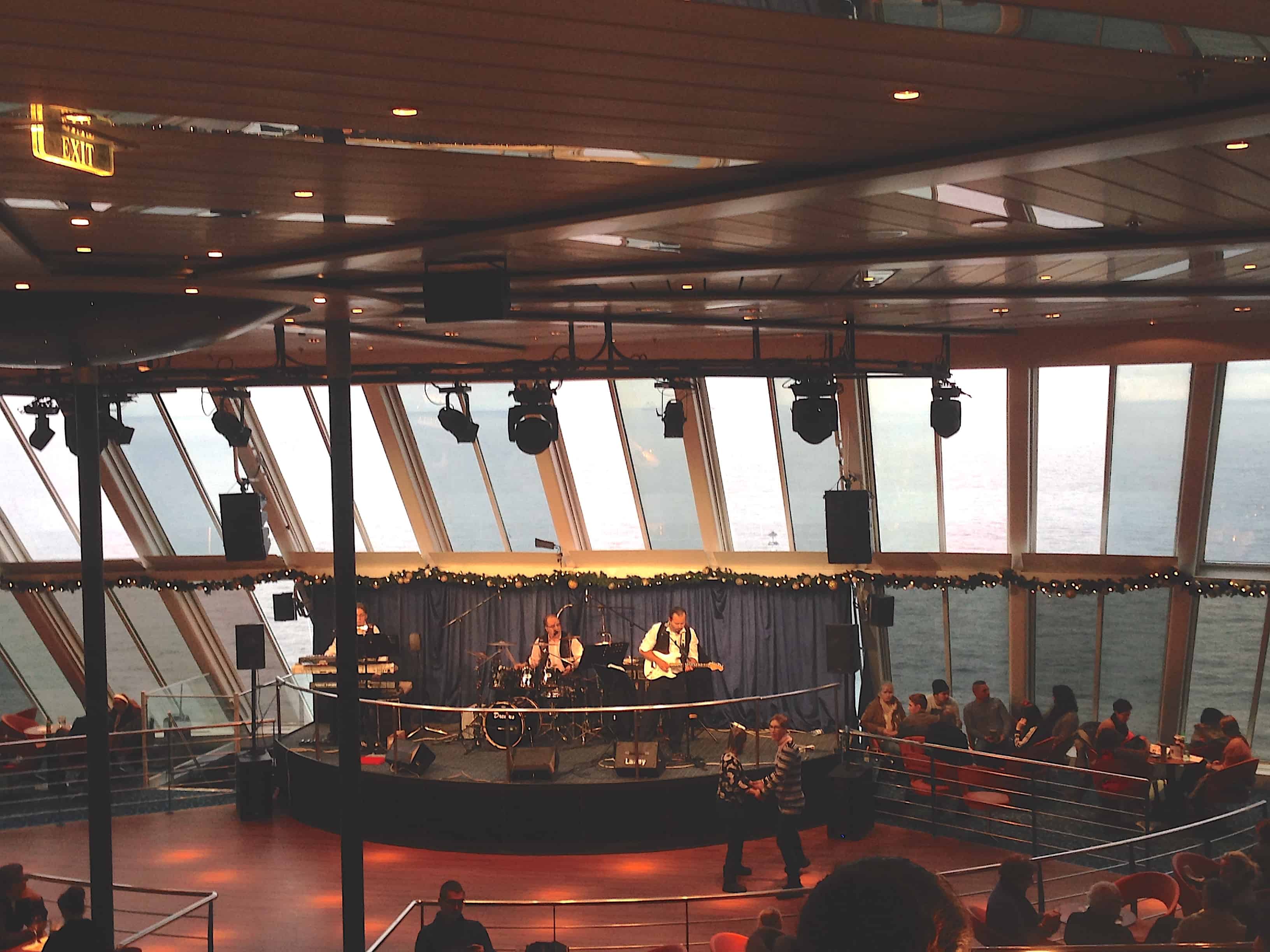
On the ferry from Helsinki to Tallinn.
For this whirlwind trip, I opted for an Airbnb in a nondescript neighborhood. I wouldn’t be spending much time there, so no need for many amenities. After checking in, I left for a series of interviews. First stop, was a visit to the headquarters of Jobbatical for an interview with founder Karoli Hindriks. The company’s headquarters has the open, playful atmosphere found in any Silicon Valley startup, with the local touch of a giant wooden swing in the lobby — a nod to Estonia’s national sport of swinging (kiiking).
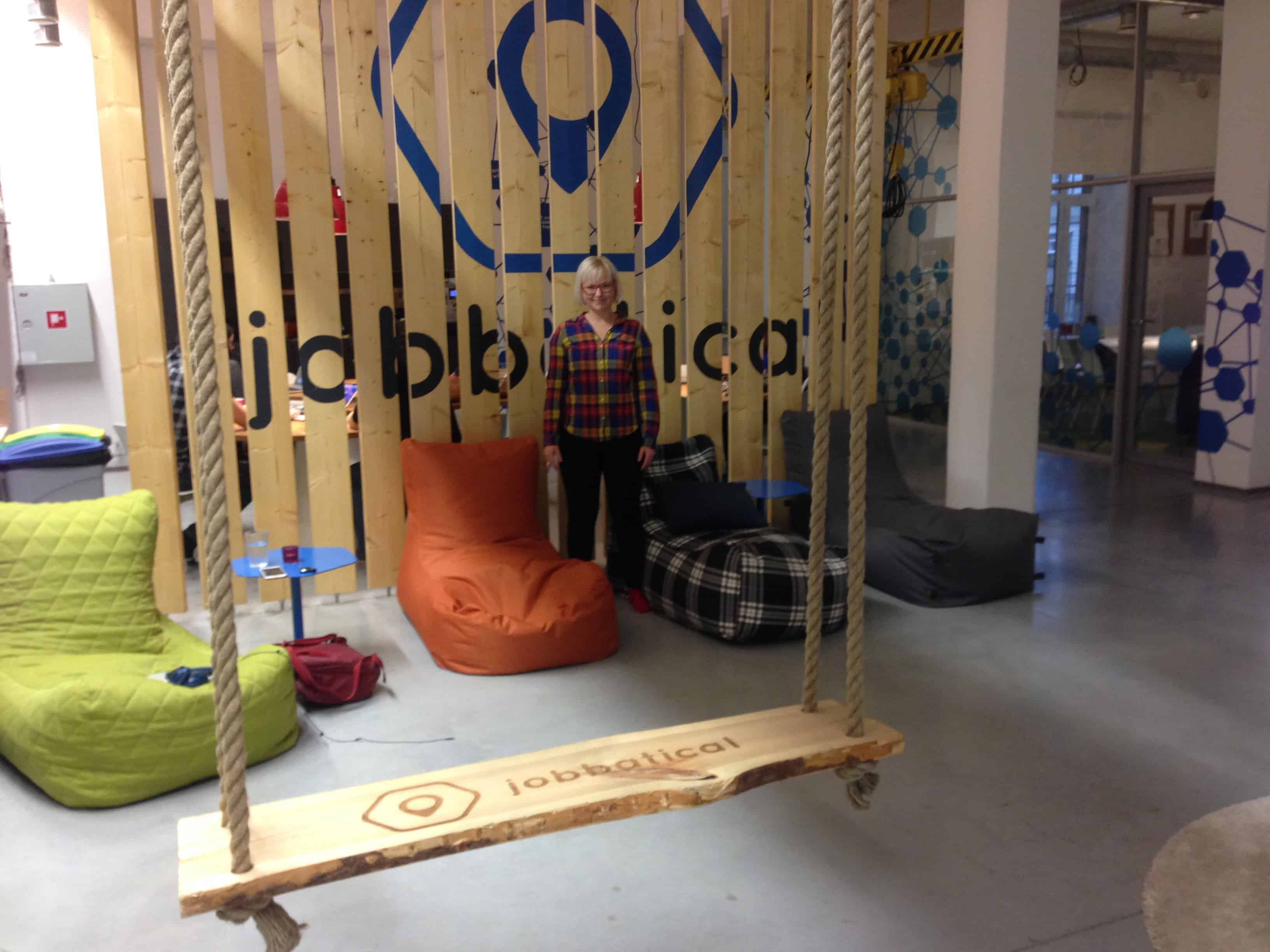
Jobbatical founder Karoli Hindriks
Hindriks, 35, was a small child when the last Soviet tanks and soldiers filed out of Estonia in 1991, not long after the country declared its independence from the USSR. The joyful celebration that followed decades of occupation was quickly replaced by reality. Tucked into the northeastern corner of Europe, with a population of 1.3 million, no natural resources, and no major economic engine, residents looked around and wondered: Now what? Its geography creates a sense of both isolation and vulnerability. The native language is spoken by just over a million people. At various periods in its history, it’s been invaded by Sweden, Denmark, Poland, Germany, and Russia.
Hindriks is a perfect example of how the country has responded to what otherwise could be severe limitations. Jobbatical is a natural extension of both her love for Estonia and her desire to look beyond its borders. The startup helps people who are traveling the world find jobs that let them earn money to extend their journeys.
Many of the employees in the Tallinn office came from outside Estonia and found their gig via Jobbatical. “I was born in the Soviet Union,” Hindriks said.
“My childhood was so isolated. Having seen such a closed society, I found a way to get a scholarship and get out and see another culture. One part of being from a country that has such a small internal market is that your mindset has to be global from the beginning. We’re living in a world where I’m connected to people all around the world.”
“It was one thing to look at people around me and how we perceived geographies when we were growing up,” Hindriks added. “We used to have friendships and they were very local. Suddenly, we’re living in a world where I’m connected to people all around the world. We start to perceive geography much differently than we did before.”
Estonia’s Digital Ambitions
Indeed, the country is trying to reinvent that notion of geography though its sweeping e-Estonia initiative. The government has become an incubator for programs pioneering advances in digital citizenship, security, virtual business, and education. And, like any good startup, it knows how to market itself.
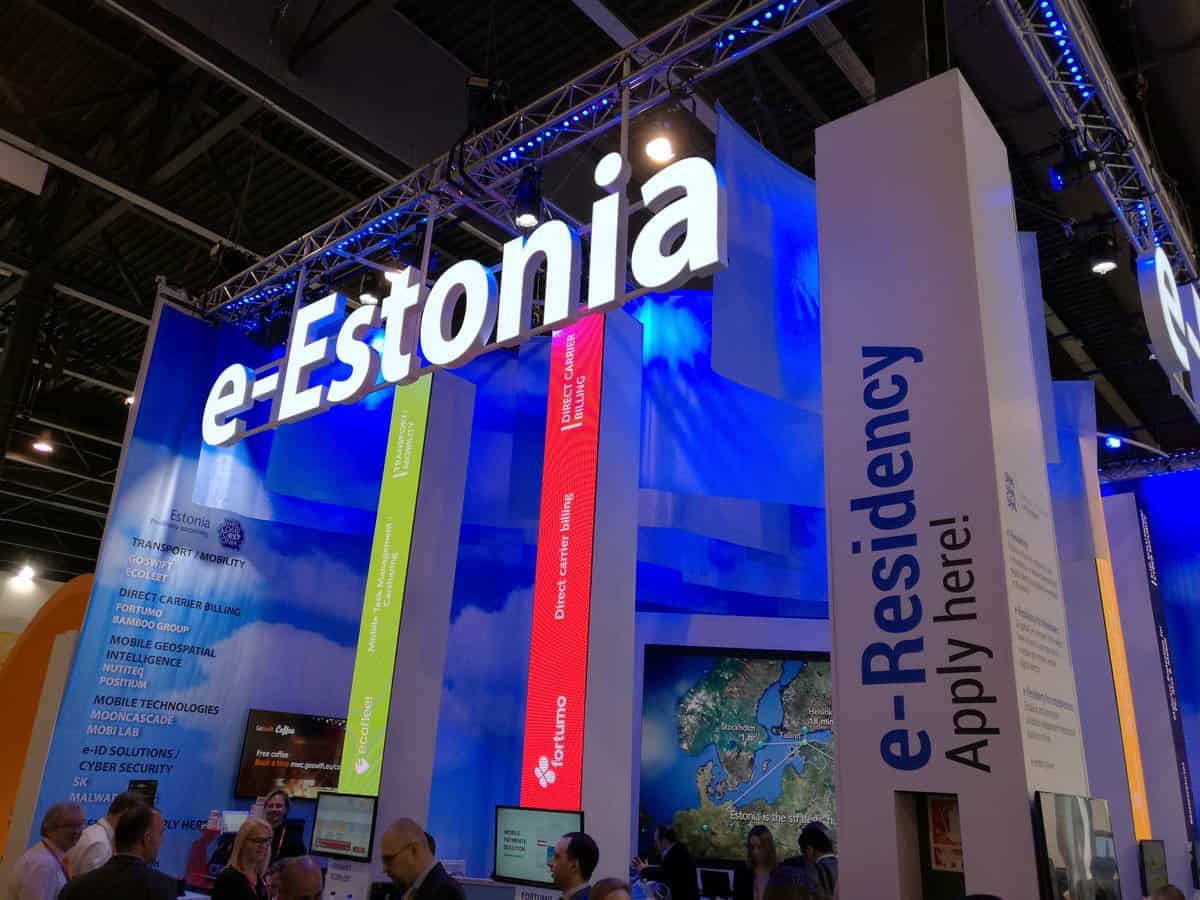
E-Estonia booth at Slush.
During Slush early in the week, e-Estonia sponsored a party that was hosted by Estonian president Kersti Kaljulaid. The project includes the e-Residency program that allows anyone to become an official resident of Estonia without having to move there. E-Residents are given an identification card with a chip that uses 2048-bit public key encryption.
With that digital ID, they can access government services to set up a company or open a bank account in Estonia without ever needing to actually visit. The idea is to make Estonia’s remoteness irrelevant. “Even ten times larger states cannot beat us,” Kaljulaid said that night. “If you wait until your home country implements similar solutions, it could take a long time and your competitors would get ahead by a few years.”
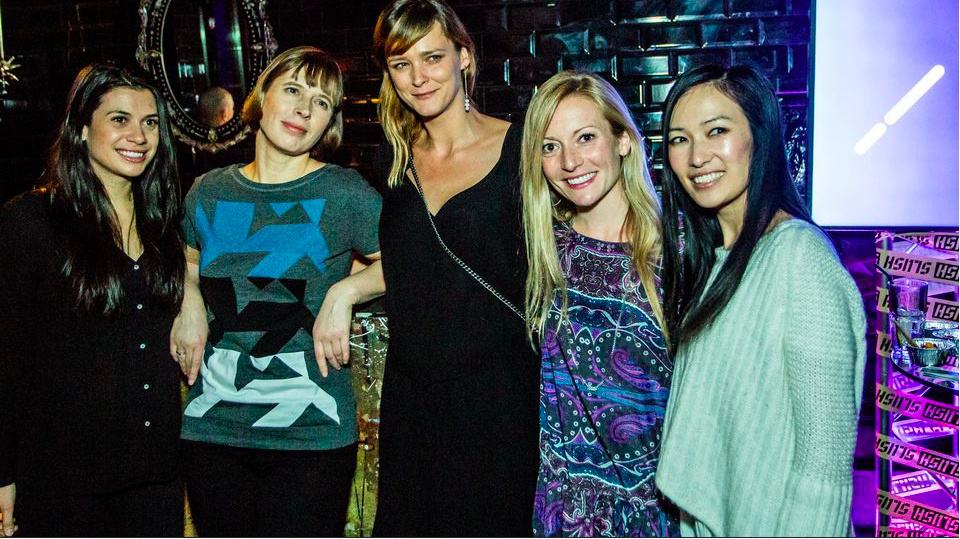
Estonian president Kersti Kaljulaid, second from right.
After leaving Jobbatical, I took an Uber east to the center of modern Tallinn and entered Platz, a local restaurant whose menu reflects Estonia’s global outlook: a Korean vegetable dish, foie gras, lamb curry, hamburgers, and a Spanish omelet. I was there to meet Mari Vavulski, head of Startup Estonia, which runs a wide range of programs to promote the local ecosystem. Vavulski said the success of Skype, whose co-founders were Estonian, has had a big impact on local entrepreneurs. “Skype had what it took to build a global company,” Vavulski said. “Skype has proven that a small country can do something big.”
The desire to deepen these international ties, through startups and e-government, has taken on even greater urgency over the past two years with the election of President Donald Trump. His efforts to sow uncertainty about the NATO alliance, and his friendship with Russian President Vladimir Putin, have put Estonians on edge. It’s not surprising in light of Russia’s increasingly aggressive foreign policy, including its invasion of Ukraine, or statements like the one from Trump advisor Newt Gingrich, who referred to the country as “the suburbs of St. Petersburg.” People here are eager to tell you that Estonia is one of the few NATO countries that pays its official share of costs, countering a specific complaint levied by the new Trump administration against its European allies.
Still, they are happy that France and the United States have deployed additional troops here under the NATO banner.
Heidi Kakko, managing director or the Estonian Business Angels Network, said people know how fragile their country’s existence can be. Sitting in Café Lyon, where servers wearing red berets and shirts with blue and white stripes brought us pastries and coffee, Kakko said she chats with her oldest son about how the country should approach its delicate relationship with Russia.
He wonders, for instance, if Trump’s embrace of Putin isn’t the wiser course, rather than a more confrontational strategy. “It’s not as if every day we’re looking to the side at the Russian border. But you know what happens if there are missteps,” Kakko said. “We don’t really have major defenses. Someone would only need five hours after the tanks rolled across the border again and Estonia would be in ruins.”
And so politicians and entrepreneurs hope that things like the e-Residency program and the country’s startup ecosystem will make more people around the world feel like they have some emotional and economic stake in this little country that few will ever visit. And that, in turn, helps this nation fell a bit less alone. “I don’t think tanks would be rolling in tomorrow,” said Steven Tamkivi, founder of Tallinn-based Teleport. “But our friendship circles now are global, and we’re very reliant on being part of a global community.”
The Cold & Dark Appeal of Tallinn
After my meetings, it was time to explore. With the sun setting at 3:30 p.m., darkness had already arrived and a light snow began to fall as I walked into the historic city center of Tallinn. The Old Town is entered by passing through the Viru Gate, two conical towers that on this night were covered with red holiday lights. White lights hung across the street ahead. From the first sight, it almost like one imagines you are entering Santa’s workshop at the North Pole.
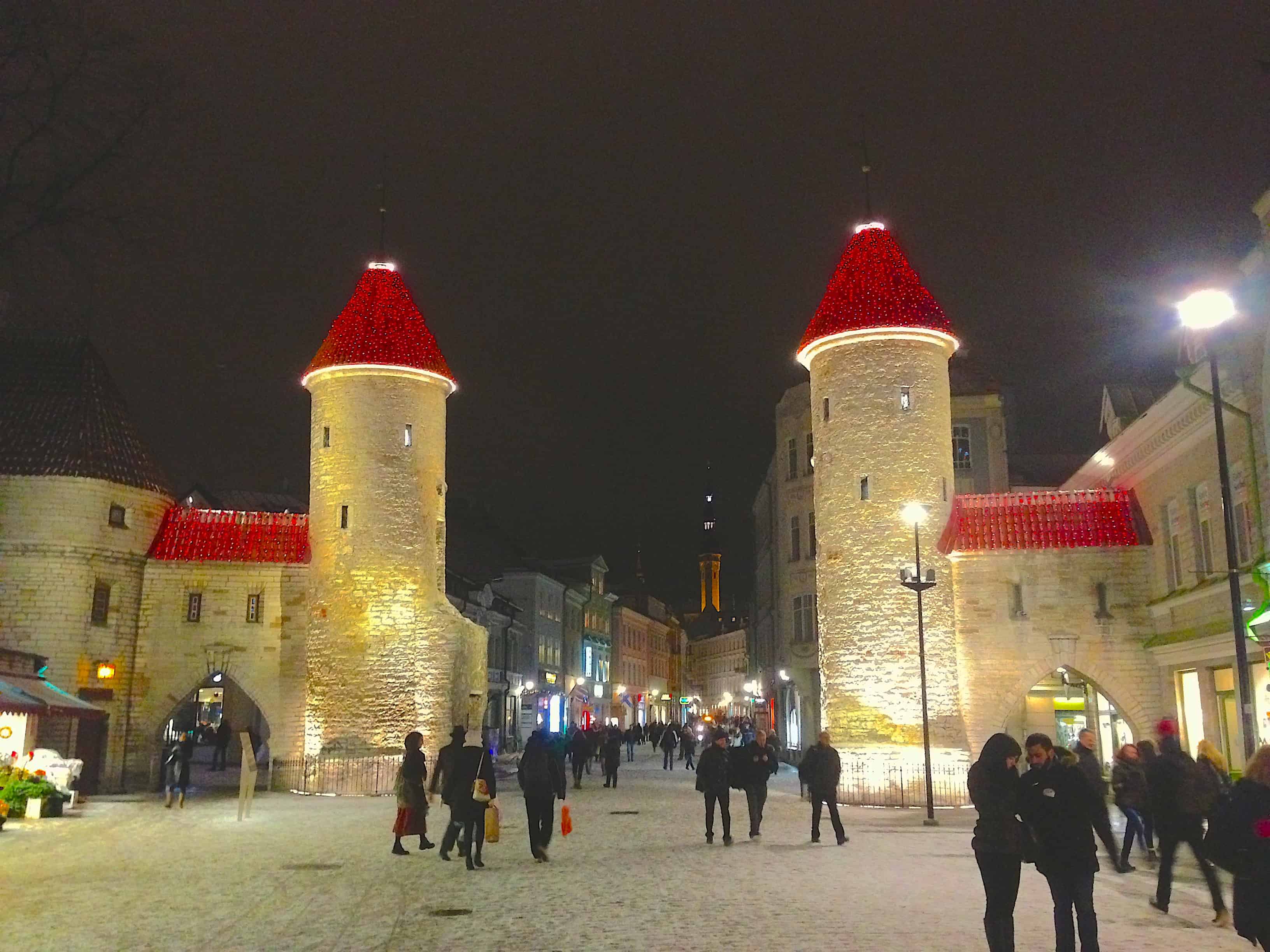
Viru Gate
Inside, the architecture is a mix of period styles, from classic European Medieval to Russian Orthodox churches, all incredibly well-preserved or restored. This eastern section is known as “Lower Town.” As I walked along its Medieval cobblestone streets, I walked past pastel-colored store storefronts of pink and light green.
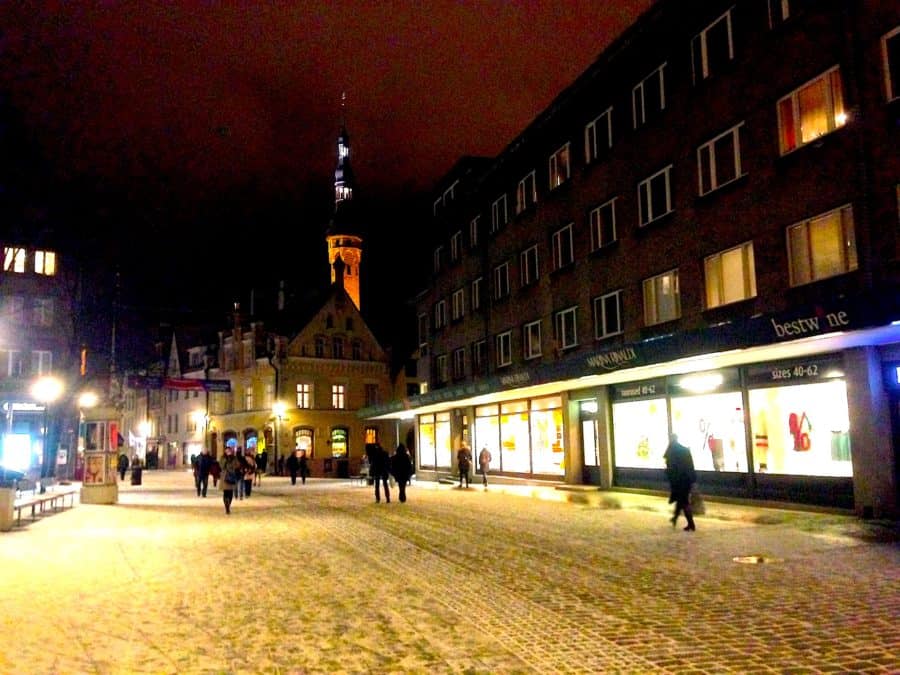
Passing an ice skating rink, and holiday signs, I arrived Christmas Market sitting in the Town Hall Square. On one side sat the Gothic town hall itself. In the square, vendors were selling all sorts of local crafts and foods, and in the center was a large stage. The performance was compromised of a large group of women wearing short-cut Santa suits dancing to some rather un-holiday-like disco music. The crowd seemed to be having fun, and who I to judge what could be defined as family, holiday fun?
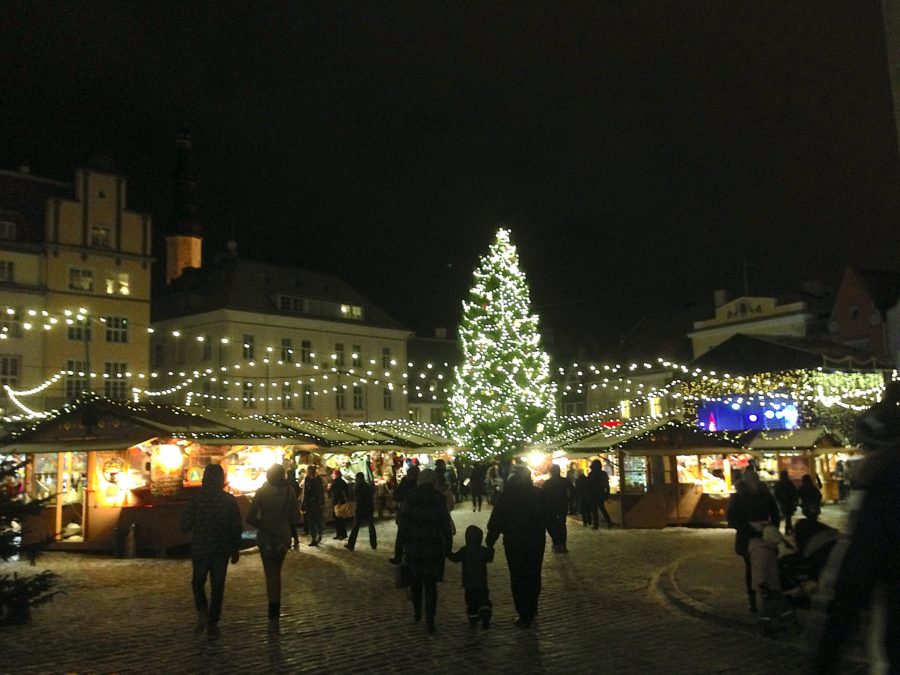
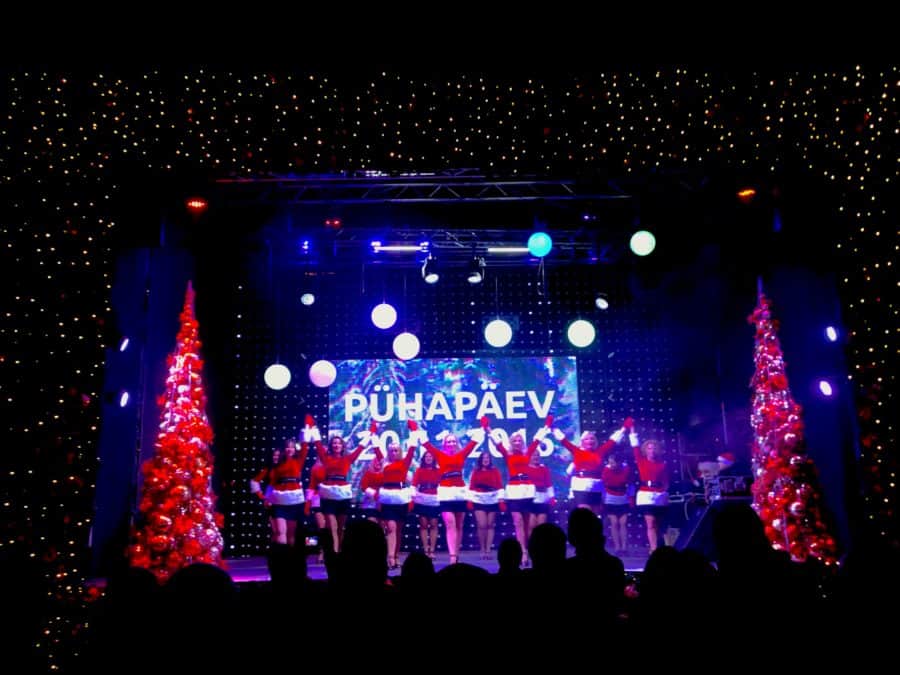
From the square, I walked north, eventually reaching a citadel wall. Climbing up some stairs, the covered path at the top of the wall led me further up to “Toompea” or “Upper Town.” This once-fortified hilltop provides a spectacular view of the Lower Town, even at night. I strolled past the Estonian Parliament building, and eventually stumbled across the Alexander Nevsky Cathedral, A Russian Orthodox church, built in the late 19th century.
The onion-shaped domes and the red-and-white exterior, are stunning to see. Inside, it remains a serious place of worship, with many areas restricted to members of the Russian Orthodox church. A guard politely reminded visitors that new pictures were allowed, and kept close watch that no one snuck into the inner sanctum.
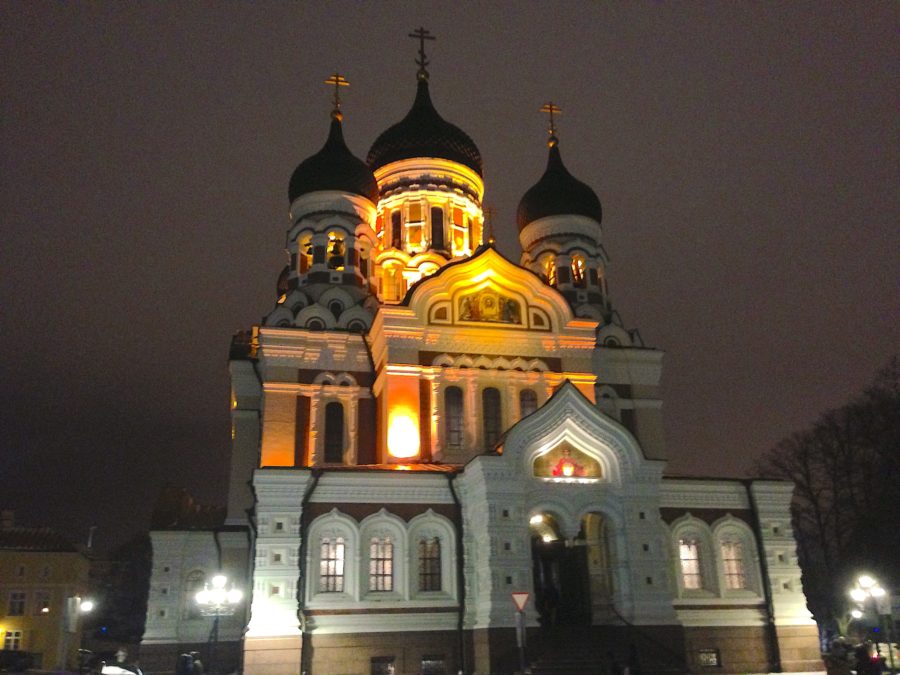
Alexander Nevsky Cathedral
With temperatures falling below zero degrees Celsius, and the early sunset creating the sensation that it was already the middle of the night, I grabbed a takeout sandwich around 9:30 p.m. and headed back to my Airbnb to get warm and get an early night’s sleep.
Seeing & Feeling the Isolation of Estonia
I woke the next morning well before the sunrise at 9 a.m. to get the most out of my 6.5 hours of daylight. Temperatures would barely hit zero degrees Celsius in the early afternoon, and would soon be back to -4 degrees Celsius. Throughout the day, I’d need to duck in and out of coffee shops in search of some warmth, despite being heavily bundled from head to do.
Deciding to keep my itinerary limited, I headed east of the city in an Uber to see the Kadriorg Art Museum, a gorgeous Baroque building located in a park that stretches over 70 hectacres. The museum is yet another legacy of Estonia’s Russian past, being built by Peter the Great for his wife in the early 18th century after a successful invasion of Tallinn. Today, the museum’s collection of early European and Russian art is impressive, but it was the exterior and the grounds that left a greater impression on me.
As I walked around outside, a light snow was falling again. Just enough to be decorative and magical without making the already freezing temperatures insufferable. About 30 minutes of walking was the limit. But I managed to make it outside to the English Garden, where I stood looking out a grove of Oak trees and pines surrounding an open field. No another person was visible in any direction, and suddenly I was hit with the sensation of being in Estonia, distant and far and isolated at times. Yet surrounded by beauty. The moment was fleeting as the cold pressed, and walked as fast as possible to the Katharinenthal Café & Bakery at the far edge of the park for coffee and warmth.
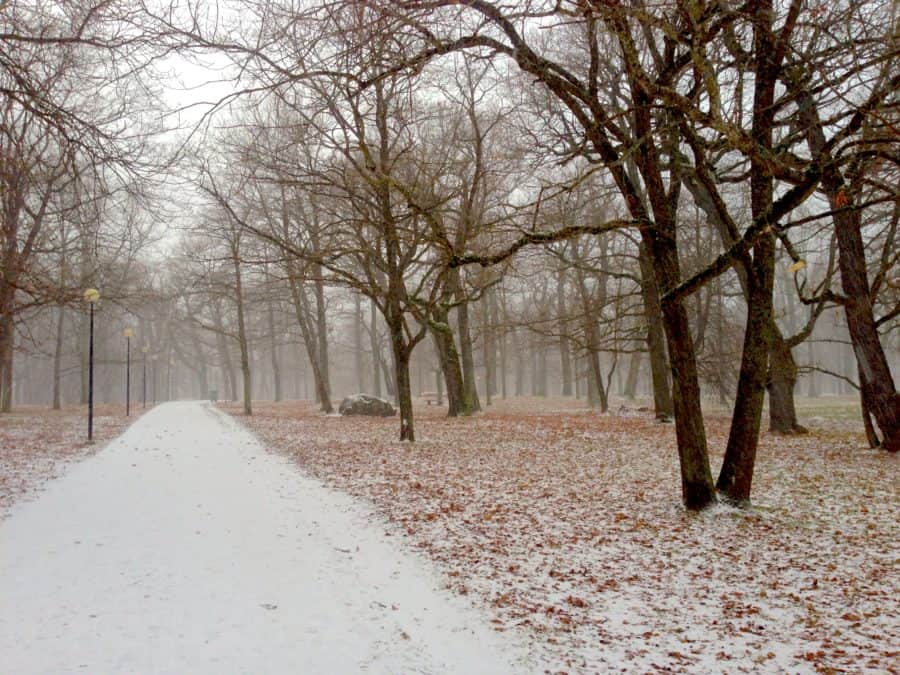
Kadriorg Park
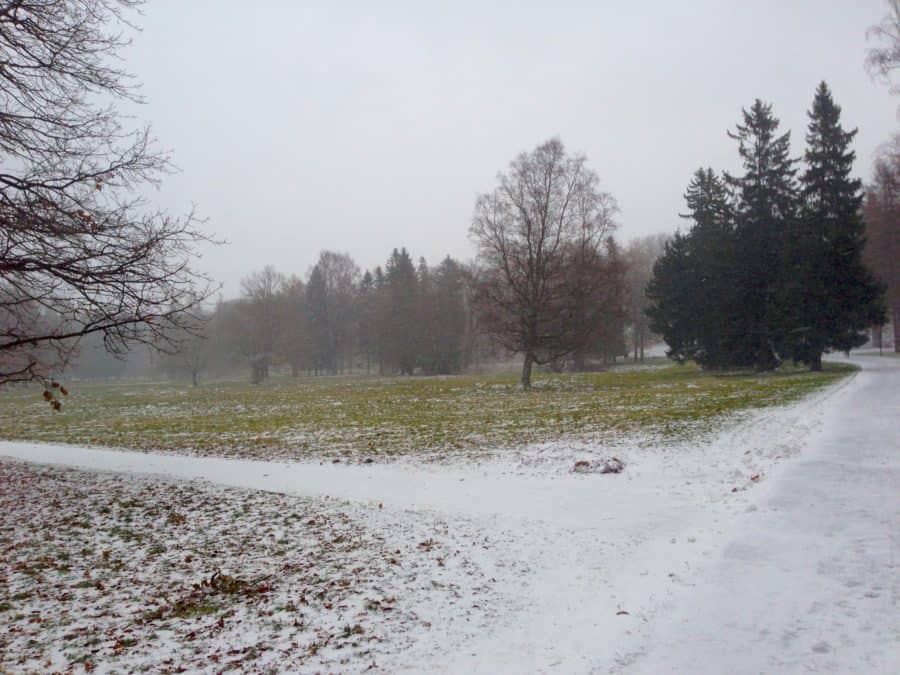
Kadriorg Park
From the park and Estonia’s past, I traveled west and arrived north of the Old Town to get a glimpse of Tallinn’s future at The Telliskivi Creative City (Telliskivi Loomelinnak).
This former railway and factory center is being transformed into a hub culture and new business. Warehouses and former manufacturing operations are being renovated, with shipping containers sprinkled around to serve as cafes and kiosks. It features the Lift99 coworking space for startups and the headquarters for crowdfunding financing platform Funderbeam.
They are surrounded by trendy restaurants like Pudel selling craft beers, artists’ cooperatives, and a range of other small businesses both digital and analogue. Many of the 10 formerly industrial buildings are now adorned with fantastic graffiti designs from local artists. It’s as if someone carved out a few blocks of San Francisco’s South of Market district, transported it the Baltics, and dropped it here.
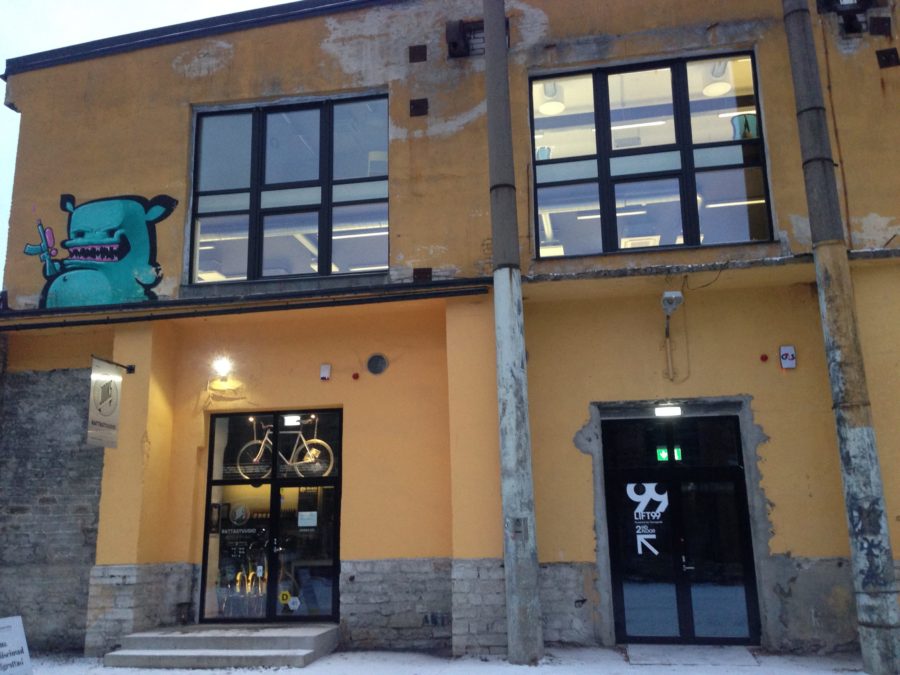
Telliskivi Creative City
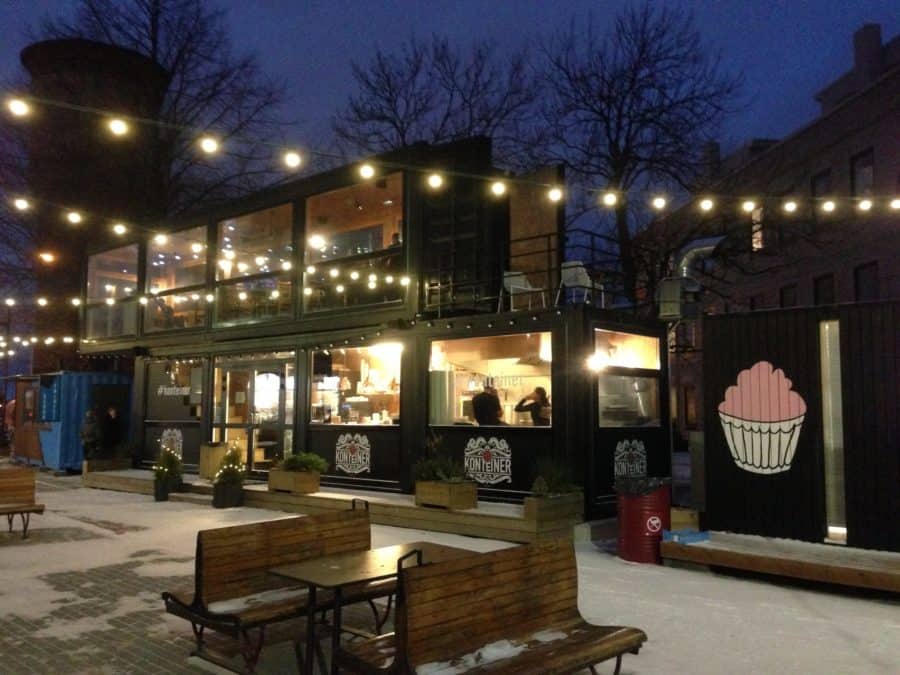
Telliskivi Creative City
As my last glimpse of Tallinn before heading to back to the Airbnb to sleep and to catch an early ferry back to Helsinki the next morning, it was also an optimistic one. Despite centuries of invasions and occupations, and a newly reckless neighbor in Russia, there was no hesitation Telliskivi, among the crowd of artists and entrepreneurs, in looking forward. With music flowing out of windows and the aroma of restaurants filling the freezing night air, it was a beautiful and defiant place, an aggressive bet that Tallinn has a future.
Chris O’Brien is an American journalist living in Toulouse, France. Before moving in 2014, he was based in Silicon Valley for 15 years, he wrote about technology and startups for the San Jose Mercury News and Los Angeles Times. From France, he publishes the twice-weekly newsletter French Crossroads which covers news and travel in France.







